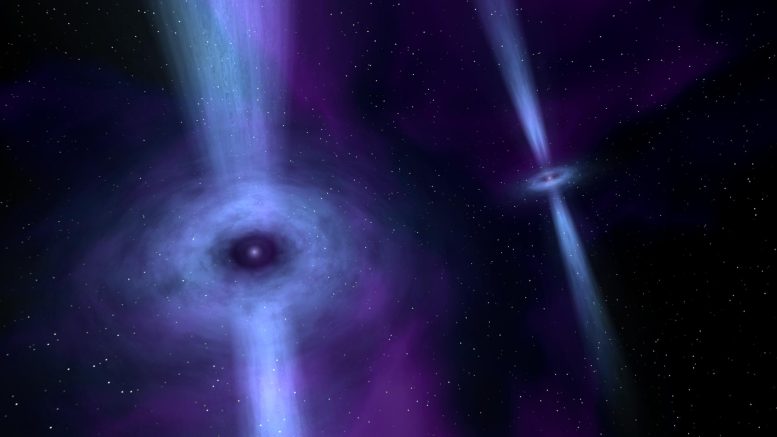Researchers have conducted a 16-year long experiment to challenge Einstein’s theory of general relativity. The international team looked to the stars — a pair of extreme stars called pulsars to be precise – through seven radio telescopes across the globe. Credit: Max Planck Institute for Radio Astronomy
Researchers at the University of East Anglia and the University of Manchester have helped conduct a 16-year long experiment to challenge Einstein’s theory of general relativity.
The international team looked to the stars — a pair of extreme stars called pulsars to be precise – through seven radio telescopes across the globe.
And they used them to challenge Einstein’s most famous theory with some of the most rigorous tests yet.
The study, published today (December 13, 2021) in the journal Physical Review X, reveals new relativistic effects that, although expected, have now been observed for the first time.
Dr. Robert Ferdman, from UEA’s School of Physics, said: “As spectacularly successful as Einstein’s theory of general relativity has proven to be, we know that is not the final word in gravitational theory.

Researchers have conducted a 16-year long experiment to challenge Einstein’s theory of general relativity. The international team looked to the stars – a pair of extreme stars called pulsars to be precise – through seven radio telescopes across the globe. Credit: Max Planck Institute for Radio Astronomy
“More than 100 years later, scientists around the world continue their efforts to find flaws in his theory.
“General relativity is not compatible with the other fundamental forces, described by quantum mechanics. It is therefore important to continue to place the most stringent tests upon general relativity as possible, to discover how and when the theory breaks down.
“Finding any deviation from general relativity would constitute a major discovery that would open a window on new physics beyond our current theoretical understanding of the Universe.
“And it may help us toward eventually discovering a unified theory of the fundamental forces of nature.”
Led by Michael Kramer from the Max Planck Institute for Radio Astronomy in Bonn, Germany, the international team of researchers from ten countries, put Einstein’s theory to the most rigorous tests yet.
Dr. Ferdman said: “A (function(d, s, id){
var js, fjs = d.getElementsByTagName(s)[0];
if (d.getElementById(id)) return;
js = d.createElement(s); js.id = id;
js.src = "https://connect.facebook.net/en_US/sdk.js#xfbml=1&version=v2.6";
fjs.parentNode.insertBefore(js, fjs);
}(document, 'script', 'facebook-jssdk'));
Read original article here